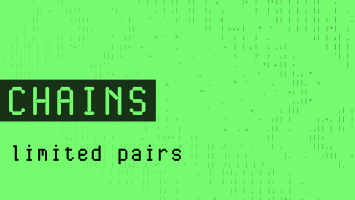The proposed ERC 6551 token standard for NFTs is generating interest among crypto enthusiasts, as it would enable digital assets to own other tokens, a development that could significantly transform the NFT and metaverse landscape.
Speaking to Laura Shin on a recent episode of the Unchained Podcast, Benny Giang and Jayden Windle, two of the authors of the Ethereum Improvement Proposal (EIP) for ERC 6551, stated this new standard allows NFTs to own other tokens, essentially equipping them with their own ‘wallets.’
What is ERC 6551?
The token standard proposal, introduced in February, focuses on creating a system that assigns every ERC-721 (non-fungible token) a smart contract account. This will allow these tokens to own assets and interact with applications without changing existing ERC-721 smart contracts or infrastructure.
This system comprises two main components: a permissionless registry for deploying token-bound accounts and a standard implementation interface.
The registry will deploy a unique smart contract account for each ERC-721 token, allowing the token to interact with the blockchain, record transaction history, and own on-chain assets. Control of each token-bound account is delegated to the owner of the ERC-721 token, allowing the owner to initiate on-chain actions on behalf of their token.
The proposal seeks to be maximally backward compatible with existing non-fungible token contracts. It also uses EIP-155 chain IDs to uniquely identify ERC-721 tokens, allowing for optional support of multi-chain token-bound accounts.
Developer reaction
The initial developer discussion for the proposal centered on potential security implications, such as the risk of duplicating registries and the need for trust verification. Suggestions included creating a registry for broad registration of account Implementations and making the proposal’s registry canonical due to its permissionless nature.
The proposal’s potential implications for reducing airdrop costs were also highlighted, along with a discussion that also raised security worries about adding metadata to the NFT registry.
More recently, with over 160 comments from Ethereum developers, concerns were raised about the proposal still being in the ‘Draft’ status, potentially subjecting it to significant changes. Finally, there were discussions about finalizing the naming of functions and the potential impacts on those implementing the EIP.
Benefits of ERC 6551
As Giang explained on the Unchained Podcast, ERC 6551 was sparked by a simple query –
“What if we had a project that was an NFT project that had a character, and sometimes we call this a PFP (Profile Picture) project, right? Our main question was like, why can’t you change the clothing or the aesthetic of this PFP character?”
This question led to the inception of the ERC 6551 standard, allowing NFTs to own other tokens, essentially giving them their own ‘wallets.’
Giang further added,
“Do you pursue the off-chain way where you build a database, and you have all this kind of centralization where you could render the NFT? Or you go the on-chain way, which is like every item an NFT can be applicable on-chain as a transaction.
So through this kind of journey, as we were feeling in the dark in the last eight or nine months, we realized that there was a potential solution.”
Giang and Windle also discussed the pros and cons of pursuing the on-chain or off-chain method for applying every item an NFT could own as a transaction.
They concluded that the ERC 6551 standard was a potential solution to the limitations presented by previous attempts to standardize NFTs owning assets, such as the necessity for custom logic in their smart contract. The ERC 6551 standard overcomes these restrictions, granting NFTs the same rights as Ethereum users, allowing them to own assets and take action.
The podcast guests also highlighted that while ERC 721, ERC 1155, and soul-bound tokens exist as ways to own items on Ethereum, ERC 6551 is not a token standard in the traditional sense because it gives every existing ERC 721 its own wallet, thus unlocking a new layer of compatibility for NFTs.
Use cases of ERC 6551
The implementation of ERC 6551 has created exciting prospects across various industries, according to the EIP authors. It allows NFTs to own assets and perform actions autonomously, potentially beneficial in gaming, DAOs, infrastructure and tooling, and social networks.
Giang mentioned several projects like ‘Sapiens,’ ‘Fuel Worlds,’ and ‘Parallel Trading Card Game,’ leveraging the standard for gamification. Giang commented, “It makes a lot of sense for a decentralized game inventory.” Such games, thus, allow characters to have their own wallets and act independently in the game.
According to Giang, Decentralized Autonomous Organizations, or DAOs, such as ‘Station’ and ‘Dow House,’ are also exploring this standard to monitor engagement within their communities. Further, the infrastructure and tooling industry, represented by ‘Manifold,’ ‘Nosis Guild,’ and ‘Rabbit Hole,’ are reportedly working on modules around the standard.
Giang suggested a future in which NFTs could become Network Playable Characters (NPCs), digital entities that can perform on-chain actions controlled by either a human or an AI model. This could potentially resolve the “empty world problem” observed in many digital worlds.
The ERC-6551 proposal, as explained by Jayden Windle, is simple.
“A token-bound account, under this standard, is its own type of wallet. Thus, an NFT can have a unique wallet address that can own any assets — a concept that Windle describes ‘gets pretty fractal pretty quickly.”
Under this standard, a token-bound account is its own type of wallet. Therefore, an NFT can have a unique wallet address to own assets. However, it is important to note that while any Ethereum wallet can control an NFT’s wallet, the ownership of the token-bound account will always be owned by the NFT.
If approved, the advent and application of the ERC 6551 standard could mark a significant development, expanding the functionality of NFTs and enhancing their utility.






















Comments (No)